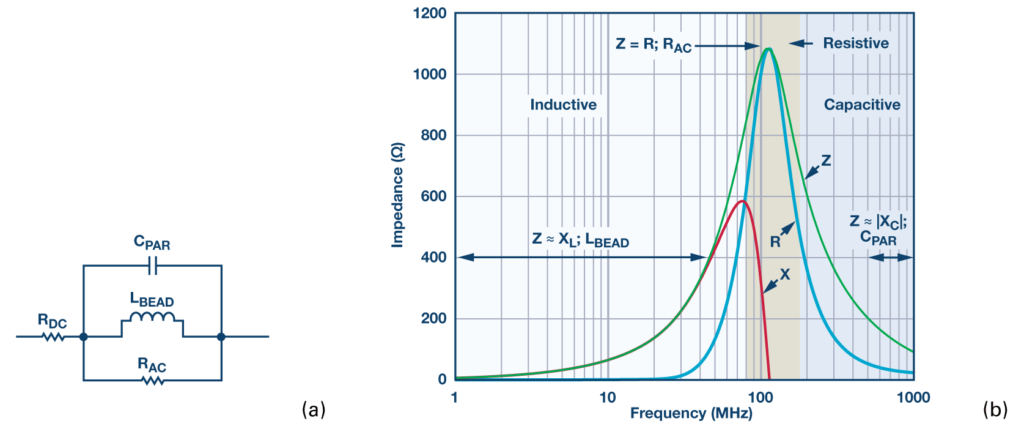
- FERRITE CORE INDUCTOR VS 60 HZ SIGNALS PC
- FERRITE CORE INDUCTOR VS 60 HZ SIGNALS SERIES
- FERRITE CORE INDUCTOR VS 60 HZ SIGNALS SIMULATOR
During the 1930s and 1940s, more research led to the commercial production of soft ferrite passive components that enabled progress with inductors and antennas. The properties associated with hard ferrites triggered the curiosity that led to the early research into electromagnetism by Oersted, Faraday, Maxwell, and Hertz. Yet, the discovery of hard ferrites or magnet material gave ancient navigators the “lodestones” that they needed to locate magnetic north. Unwanted Used as High Frequency Filters, Although Less Effective Than Capacitance Permits High Frequency Feedthrough.When we think of ferrites, discovery and technological progress are probably the last words that come to mind.
FERRITE CORE INDUCTOR VS 60 HZ SIGNALS PC
Spiral and Serpentine PC Patterns are Sometimes Resistance Drops Voltage, Degrading Effi ciency. PARASITIC FIELD CAPACITANCE USER USER TERMINAL TERMINAL PARASITIC PARASITIC AN101 FB2 RESISTANCE RESISTANCE AN101 FB1įigure B1. STRAY MAGNETIC TERMINAL ACCESSABLE WITH PC VIA.

The copper loss appears at DC, circumstances, although introducing much less loss per reducing effi ciency parasitic shunt capacitance allows unit area than ferrite beads. They can be surprisingly effective in some ing regulator radiation. Such extended length traces, the regulator path due to copper losses, parasitic shunt formed in spiral or serpentine patterns, look inductive at capacitance and potential susceptibility to stray switch- high frequency. Figure Figure B2 shows a form of inductance based fi lter con- B1 shows disadvantages are increased DC resistance in structed from PC board trace. effectiveness at lower frequencies, e.g., ≤100kHz. Advantages include wide availability and better ing performance. Typically, values of 2µH to10µH are artifacts masquerade as conducted components, degrad- appropriate. The resulting observed spike and ripple related ing instead of beads. Impinge its winding, effectively turning it into a transformer Inductors can sometimes be used for high frequency fi lter- secondary. The inductors circuit board position may allow stray magnetic fi elds to Physical confi gurations are available to suit requirements Impedance is Essentially Zero at DC and Low Frequency, Rising Above 50ĭepending on Frequency and DC Current.
FERRITE CORE INDUCTOR VS 60 HZ SIGNALS SERIES
In series along a conductor, proportionally increasing theirįor a Surface Mounted Ferrite Bead (Fair-Rite 2518065007Y6). Note that beads can be “stacked”įigure A1. As DC current, and hence DC = 0.01Ω AN101 FA1 constant magnetic fi eld bias, rises, the ferrite becomes less effective in offering loss. Impedance rises from 1 FREQUENCY (MHz) 0.01Ω at DC to 50Ω at 100MHz. Various ferrite materials and geometries 10 result in different loss factors versus frequency and power 0 level. At higher frequencies the bead’s ferrite material IMPEDENCE ( 20 interacts with the conductors magnetic fi eld, creating the loss characteristic. 0.5A 30 The bead is essentially lossless within a linear regulator’s passband. 0.2A This effect is ideally suited to high frequency noise fi lter- ) Ω 40 ing of DC and low frequency signal carrying conductors. Frequency at Various DC Bias CurrentsĦ0 A ferrite bead enclosed conductor provides the highly desir- 0A 50 0.1A able property of increasing impedance as frequency rises.

Three appendices review ferrite beads, inductor based filters and probing practice for wideband, sub-millivolt signals.ġ2 / 9 - APPENDIX A.
FERRITE CORE INDUCTOR VS 60 HZ SIGNALS SIMULATOR
A hardware based ripple/spike simulator is presented, enabling rapid breadboard testing under various conditions. This publication explains the causes of linear regulators' dynamic limitations and presents board level techniques for improving ripple and spike rejection. In practice, all linear regulators encounter some difficulty with ripple and spikes, particularly as frequency rises. Ideally, these performance gains would be accompanied by markedly reduced switching regulator generated ripple and spikes.

Benefits include improved stability, accuracy, transient response and lowered output impedance. Linear regulators are commonly employed to post-regulate switching regulator outputs. Статьи Minimizing Switching Regulator Residue … Minimizing Switching Regulator Residue in Linear Regulator Outputs (Linear Technology) - 9 АвторыĪpplication Note 101.


 0 kommentar(er)
0 kommentar(er)
